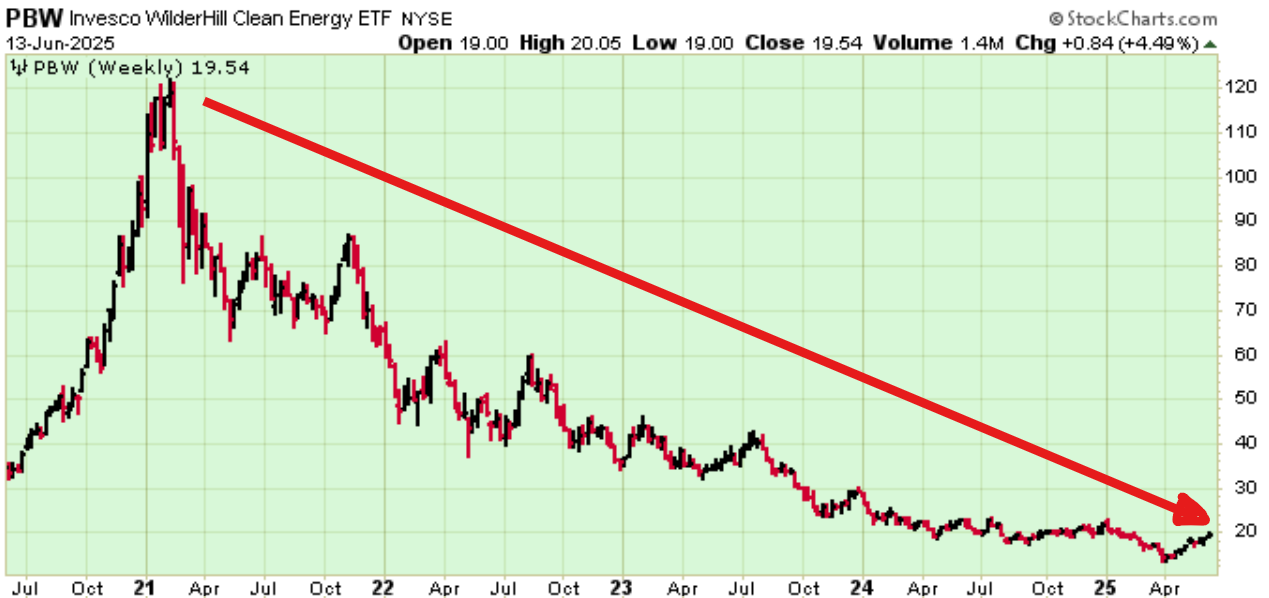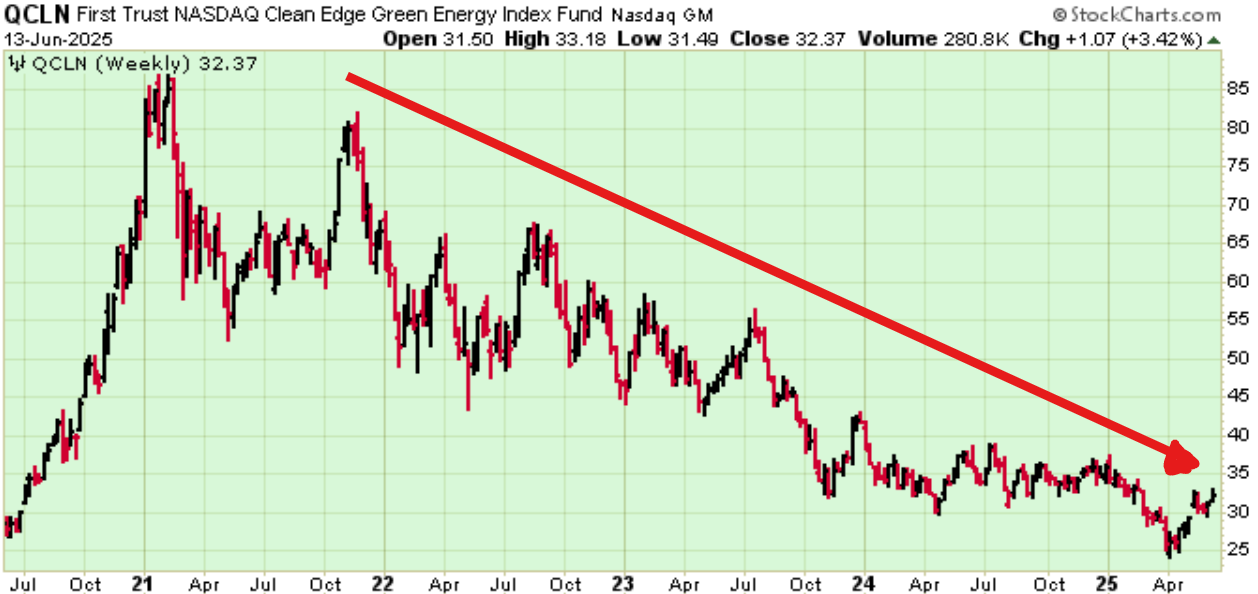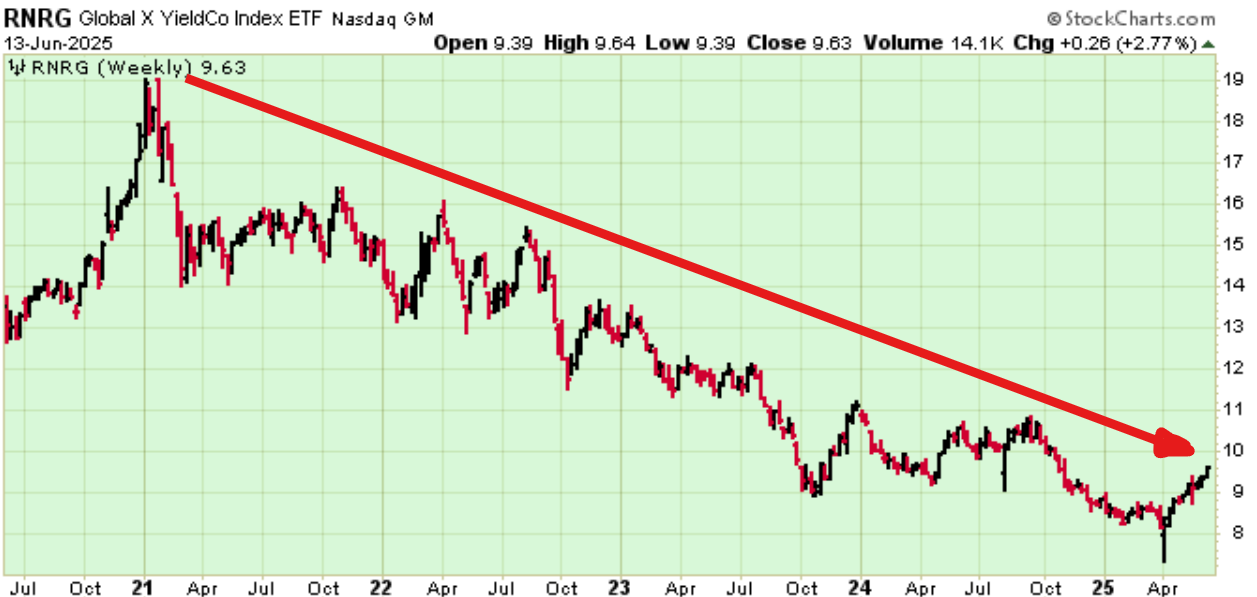Net Zero Impossible - No Nation has the Money, the Skilled Workforce or the Materials to Achieve Net Zero - "It's an Engineering Fantasy" - And it Cannot be Financed either - Welcome to Global USSR
WEEKLY -- On Sunday -- All previous Editorials are available on the Substack Archive Further long term archives are available at LinkedIn and Wordpress https://boomfinanceandeconomics.wordpress.com
An Engineering Fantasy
“Anyone who can make you believe absurdities can make you commit atrocities.” Voltaire
NET ZERO IMPOSSIBLE - NO NATION HAS THE MONEY, THE SKILLED WORKFORCE OR THE MATERIALS TO ACHIEVE NET ZERO - IT’S AN ENGINEERING FANTASY
But, first, let’s look at the financial realities of the challenge ……
BOOM has written often about the lack of viable financial, commercial and investment rationales for alternative energy “solutions” which are promoted as viable pathways to reach Net Zero.
BOOM has pointed out that private investment in these additional energy sectors does not generate sufficient returns even with the current, massive governmental subsidies available and is therefore non sensical in the long run.
Many alternative energy ventures and their private investors are discovering this for themselves as the story unfolds. Share prices are collapsing across the board for almost all companies in the sector and have been for some considerable time. (See the many Charts below). Private investors are running for the exits.
Here is just one example (for starters). It is the Share Price Chart over 5 years for the largest alternative energy ETF listed publicly on the US Nasdaq Stock Exchange.
ICLN — iShares Global Clean Energy ETF (Blackrock) with US$ 1.44 Billion of Assets Under Management
Investors are telling us (bluntly) that there is no bright future coming of glowing investment returns in so-called “alternative”, “renewable” energy.
Eventually, BOOM expects there will be no private investors willing to place capital at risk in the alternative energy sector. Then the harsh financial reality will have become obvious to everyone, not just to BOOM and BOOM readers.
On that day, the fact that alternative energy cannot attract private investment will lead to the obvious conclusion that the State, the promoters, will have to cover the cost of the entire Net Zero Forever adventure. The State will then have to fund all the manufacture, installation and maintenance costs of the renewable energy dream and the extended grid (forever). And the companies that support the global supply chains required will all become fully dependent upon Government largesse for their revenues.
Governments in turn, of course, will be fully dependent upon running huge budget deficits because taxation revenues are already fully stretched beyond endurance.
WHO WILL FUND IT ALL ? A MAGIC MONEY TREE ?
That scenario then begs a further question — Who will fund those huge budget deficits? If private investors go on strike and will not invest directly, then surely they will be reluctant to also buy sovereign bonds designed to fund renewable energy? In such a scenario, renewable energy bonds would have to be offered with very high yields, resulting in skyrocketing interest rates. The entire financial system and the real economy will be distorted and put under severe threat. All for the Greater Good, of course.
In such a scenario, the central banks will be forced (by government) to launch permanent QE programs (Quantitative Easing) and well into the distant future .
A COMMUNIST MONEY SUPPLY SYSTEM IS INEVITABLE
At that point, our financial systems in the advanced economies will become highly centralised reflective of a communist money system.
Massive, long term QE Programs, implemented to fuel the expansion of the energy supply would result in the central banks acquiring more and more and more and more assets onto their Balance Sheets (government issued securities, real estate and stocks). Why? Because that is how QE is implemented. In QE Programs, central banks buy assets with the fresh new money created at source. And, if privately owned assets are purchased, that new money will subsequently be used by the sellers of those assets to buy other, alternative assets. A spiralling Asset Price Inflation would be inevitable in such a weird world of centralised (communist) money supply combined with private ownership of assets. Karl Marx and Lenin foresaw this, by the way, and decided that private ownership of assets had to be banned in the golden, Utopian dream of the USSR.
This scenario will not happen overnight. But if the madness of Net Zero Forever continues to be entertained, then a centralised source of money will slowly become a dominant paradigm.
If the central banks refuse, then the ultimate battle between the banking system and Governments will occur and any purported independence of the central banks will disappear in an instant. Governments will take control.
The Central Committee of the Politburo will then decide on the volume of money to be created and its various distributed destinations and the Global USSR (United Soviet Socialist Republic) will be installed sequentially in each nation. For the Greater Good, of course.
Perhaps we could then find a descendent of Lenin or Stalin to be head of the Central Committee? After all, if we are to embark, yet again, upon the experiment of permanent, fully centralised money creation and control, then why not repeat the entire USSR experiment? History tells us that the road to a totalitarian, communist financial system is always paved with good intentions. Let’s continue the discussion.
Please Note: At this juncture, BOOM should mention that China does not have a strictly communist financial system. It has a Potemkin Village of “private” banks that ensure decentralised issuance of fresh new money via bank loans.
UK Emeritus Professor Michael Kelly is both a Scientist of the highest order and a life-long Engineer.
BOOM thinks it is a radical idea but perhaps we should seek an opinion from a revered engineer and scientist on the matter? Perhaps such a person may be able to envision the scenario already?
Professor Michael Kelly in the UK is such a person, with a long and distinguished career in both science and engineering. He was Prince Philip Professor of Technology in the Department of Engineering of the University of Cambridge from 2002 to 2016. From 1992 to 2002 he was Professor of Physics and Electronics at the University of Surrey. From 2003 to 2005 he was the Executive Director of the Cambridge–MIT Institute. He was Prince Philip Professor of Technology working in the Solid State Electronics and Nanoscale Science group in the Electrical Engineering division of the Department of Engineering, University of Cambridge from 2002 to 2016. He is an Emeritus Fellow of Trinity Hall, Cambridge.
In 2018, Kelly became trustee of the Renewable Energy Foundation and in 2019 a trustee of the Global Warming Policy Foundation. He was elected a Fellow of the Royal Society in 1993 and won its Hughes Medal in 2006. He was formerly the Chief Scientific Adviser to the Department for Communities and Local Government. He was elected in 1998 as a Fellow of the Royal Academy of Engineering.
In a recent interview he said …. concerning the United Kingdom and its dream of achieving Net Zero ….
“just to expand the grid to be able to have enough extra electricity so that we can have ground transport that's electrified and all heat that is industrial, commercial and domestic heat being electrified, we would need to spend on order of 1.4 Trillion Pounds. We would need 40,000 civil and electrical engineers working full-time for 30 years and about three times that many skilled trades people.
The interviewer’s introduction — “coming up on British Thought Leaders, former government scientist Michael Kelly talks about the costs of Net Zero. He says Britain does not have the money or the workforce to meet the government targets to try and do all this for the whole of the country in 30 years”.
FAR FROM REALITY
Kelly goes on to say — “You would need a workforce on the scale of the Education sector or the Health Service and we just don't have these people. These things are so far from reality. I'm very concerned that engineering Professional bodies and the Royal Academy of Engineering, indeed (even) the Royal Society are not pointing out these impossibilities”.
He said there's no open debate about green issues and he has written to the UK Government after branding the UK’s net zero plans an engineering “fantasy” with the challenges and costs massively underestimated. He has used the letter to the UK Energy and Net Zero Secretary, Ed Milliband, to explain why he believes plans to decarbonise Britain’s energy system by 2050 are doomed to fail.
Professor Kelly has conducted detailed analysis of the costs involved in the Labour Government’s net zero plans, which he says will cost a total of at least £4.4 Trillion - equivalent to £100,000 per household, just to electrify ground transport and all heat, and to retrofit all buildings.
Kelly argues that the UK's Net Zero plans by 2050 are an "engineering fantasy" due to practical, financial, and resource constraints. Below is a summary of the key points he makes during the conversation:
Immense Financial Costs:
Achieving Net Zero by electrifying ground transport and all industrial, commercial, and domestic heating would require expanding the electrical grid at an estimated cost of £ 1.4 trillion.
Retrofitting all 26 million UK houses to reduce carbon emissions by 100% could cost around £2–4 trillion, based on pilot programs showing £85,000 per house for only 60% emission reductions.
These costs equate to 7–8% of GDP, far exceeding earlier estimates (e.g., Lord Stern’s 1% of GDP), potentially requiring tax increases and equalling the education budget for 30 years.
Workforce Shortages:
The plan would need 40,000 civil and electrical engineers and three times as many skilled tradespeople working full-time for 30 years, a workforce comparable to the education or health sectors.
The UK lacks these personnel, with training a professional engineer taking 10 years, and current shortages already evident (e.g., plumbers, electricians).
Diverting engineers from critical roles (e.g., hospital life support systems) would be necessary but impractical.
Material Constraints:
Electrifying all cars would require copper equivalent to one year’s global supply, and wind turbines need 600–700 times more high-quality steel and concrete than gas turbines for equivalent energy output.
Copper mining must increase tenfold, but supply is limited, and renewable infrastructure (e.g., wind farms) is material-intensive, contradicting efficient resource use principles.
Grid Expansion Challenges:
The current grid must triple in size (2.7 times) to handle electrified transport (0.7) and heating (1.0), as winter heating demands three times more energy than electricity.
Most homes need rewiring (e.g., from 60 to 120 amps) to support heat pumps, fast chargers, and electric appliances, costing £700 billion for distribution upgrades.
Infrastructure limits (e.g., transformers, wires) in some regions are already at capacity, and grid connection delays for wind farms can reach 15 years.
Energy Storage Limitations:
Battery storage is prohibitively expensive and impractical. For example, a £45 million battery in Adelaide could power the city for 17 minutes, and one for Addenbrooke’s Hospital would cost 180–1,300 times more than diesel generators for equivalent reliability.
Battery energy density is 40 times less than petrol, with only a six-fold improvement over 50 years and a projected two-fold increase in the next 50, making large-scale storage unfeasible this century.
Unrealistic Timelines and Lack of Planning:
Retrofitting progress is slow (1% in 10 years vs. a needed 25% in 40 years), and there’s no roadmap for Net Zero, unlike the semiconductor industry’s clear 10-year plans.
The scale of disruption (e.g., rewiring homes, replacing appliances) is comparable to the 1960s gas conversion but far more complex, requiring decades of coordinated effort.
Ethical and Professional Concerns:
Kelly argues it’s unethical and unprofessional for engineers and institutions (e.g., Royal Academy of Engineering, Royal Society) to not highlight Net Zero’s infeasibility, comparing it to building on an earthquake fault without warning.
Engineers have a Code of Ethics requiring transparency, but many remain silent, assuming Net Zero is possible or avoiding debate to “go along for the ride.”
Lack of Open Debate:
There’s no public or scientific debate on Net Zero’s feasibility, with Kelly’s estimates dismissed without explanation (e.g., by the Energy Secretary).
Cancel culture and fear of backlash deter scientists from questioning climate models or Net Zero policies, as admitting models “run too hot” could slash research funding.
Climate Model Inaccuracies:
Climate models are unreliable for long-term predictions, akin to weather forecasts beyond 10 days, due to complex, unproven assumptions about interacting variables.
The belief that zero carbon emissions will stop climate change is flawed, as climate has always changed, and past geological periods had higher CO2 and temperatures without catastrophic outcomes.
Global Context and Futility:
UK and US emission reductions are dwarfed by China’s (33 times UK savings) and India’s (7 times) increases from 2000–2022, rendering local efforts futile.
EU restrictions on fossil fuel development in Africa, forcing reliance on costly renewables, are seen as immoral and akin to modern slavery.
Electric Vehicle (EV) Challenges:
EVs are less practical due to high battery costs, limited range (half a petrol tank’s), and inefficiencies in cold climates.
Consumer reluctance is evident (e.g., unsold EVs at Bristol port), and mandates forcing EV sales could harm the car industry, leading to degrowth.
Environmental Irony:
Renewable energy (e.g., wind, solar) requires extensive land use and mining, causing more ecological damage than fossil fuels, which use smaller pipelines.
Green lobbyists are criticized for single-issue focus, ignoring trade-offs like material use and environmental impact.
Nuclear as a Partial Solution:
Small nuclear reactors, proven in US Navy warships, are viable but face overregulation due to excessive safety standards (e.g., surviving nuclear bombs or plane crashes).
France’s low electricity costs from nuclear power demonstrate feasibility, but current reactors wouldn’t meet modern safety rules, and nuclear can’t ramp up/down quickly like gas turbines.
Adaptation Over Mitigation:
Kelly advocates adaptation (e.g., sea walls, like New Zealand’s earthquake fund) over mitigation, as it’s more practical and only requires action when needed (e.g., Thames Barrier’s success).
Net Zero’s scale risks a financial crash by the decade’s end, exacerbated by unrealistic policies and economic burdens.
Societal and Economic Impacts:
Modern civilization relies on seven times more energy per person than in 1800, and reducing energy use would revert living standards to pre-industrial levels.
New technologies (e.g., EVs) destroy old jobs (e.g., like shipping to aviation), and Net Zero could lead to degrowth, reducing production and mobility.
Kelly concludes that Net Zero is unachievable by 2050 due to insurmountable barriers in cost, workforce, materials, and infrastructure, urging a shift to adaptation and more realistic energy policies like nuclear, while criticising the lack of debate and professional accountability.
Quotes from Professor Kelly:
On Computer Models of future climate —
‘I take real exception to having simulation runs described as experiments (without at least the qualification of ‘computer’ experiments). It does a disservice to centuries of real experimentation and allows simulations output to be considered as real data. This last is a very serious matter, as it can lead to the idea that real ‘real data’ might be wrong simply because it disagrees with the models! That is turning centuries of science on its head.‘
‘My overall sympathy is with Ernest Rutherford: “If your experiment needs statistics, you ought to have done a better experiment.”’
The Interview with Professor Kelly:
RENEWABLE ENERGY COMPANIES — SHARE PRICE PERFORMANCE OVER 5 YEARS
BOOM only looks at companies in this sector which have annual revenues above US $ 3 Billion. The renewables companies presented here include Orsted, NextEra Energy, Vestas Wind, Jinko Solar, Canadian Solar, Brookfield Renewable, Daqo Energy, Algonquin Power. BOOM first looked at these company share price charts in 2023. The price trend has continued since then. And it is (almost) ALL DOWN.
Investors have been hammered and are unlikely to ever invest in Renewable Energy again.
ORSTED
This is the share price chart over 5 years for the Danish renewable energy company Orsted A/S on the OTC market in the USA. The US Stock Code for the company is DOGEF (alternatively DNNGY).
This explanation is straight from the company itself ……..
The Orsted vision is a world that runs entirely on green energy. Orsted develops, constructs, and operates offshore and onshore wind farms, solar farms, energy storage facilities, renewable hydrogen and green fuels facilities, and bioenergy plants. Orsted is recognised on the CDP Climate Change A List as a global leader on climate action and was the first energy company in the world to have its science-based net-zero emissions target validated by the Science Based Targets initiative (SBTi). Headquartered in Denmark, Orsted employs approx. 8,000 people. Orsted's shares are listed on Nasdaq Copenhagen (Orsted). In 2022, the group's revenue was DKK 132.3 billion (EUR 17.8 billion).
However, despite such high hopes, investors seem disinterested in the company. They have been running for the exits for almost 5 years now. That seems strange if the future is to be provided by alternative energy sources. As BOOM always says, make your own conclusions. Do your own research.
NEXTERA ENERGY
VESTAS WIND
JINKO SOLAR
CANADIAN SOLAR
BROOKFIELD RENEWABLE
DAQO NEW ENERGY
ALGONQUIN POWER
AND HERE IS A SELECTION OF RENEWABLE ENERGY ETFs THAT YOU CAN INVEST IN (OR NOT) — THE TOP 10
(based upon AUM — Assets Under Management)
Readers may notice a similarity in investment performance.
ICLN — iShares Global Clean Energy ETF (Blackrock) with US$ 1.44 Billion of Assets Under Management
PBW — Invesco Clean Energy ETF
FAN — First Trust Global Wind Energy Index Fund
FRNW — Fidelity Clean Energy ETF
TAN — Invesco Solar ETF
QCLN — First Trust NASDAQ Green Energy Index Fund
CNRG — Kensho Clean Power ETF
ACES — ALPS Clean Energy ETF
RNRG — Global X YieldCo ETF
BOOM (certainly) does not offer investment advice. The share prices speak volumes for themselves. Perhaps we can ask the politicians who promote Net Zero Forever to become personal investors? Pigs might fly before that happens.
=============================================================
In economics (and finance), things work until they don’t. Do your own research. Make your own conclusions.
BOOM does not offer investment advice.
===========================================================
Disclaimer: All content is presented for educational and/or entertainment purposes only. Under no circumstances should it be mistaken for professional investment advice, nor is it at all intended to be taken as such. The commentary and other contents simply reflect the opinion of the authors alone on the current and future status of the markets and various economies. It is subject to error and change without notice. The presence of a link to a website does not indicate approval or endorsement of that web site or any services, products, or opinions that may be offered by them.
Neither the information nor any opinion expressed constitutes a solicitation to buy or sell any securities nor investments. Do NOT ever purchase any security or investment without doing your own and sufficient research. Neither BOOM Finance and Economics.com nor any of its principals or contributors are under any obligation to update or keep current the information contained herein. The principals and related parties may at times have positions in the securities or investments referred to and may make purchases or sales of these securities and investments while this site is live. The analysis contained is based on both technical and fundamental research.
Although the information contained is derived from sources which are believed to be reliable, they cannot be guaranteed.
Disclosure: We accept no advertising or compensation, and have no material connection to any products, brands, topics or companies mentioned anywhere on the site.
Fair Use Notice: This site contains copyrighted material the use of which has not always been specifically authorized by the copyright owner. We are making such material available in our efforts to advance understanding of issues of economic and social significance. We believe this constitutes a ‘fair use’ of any such copyrighted material as provided for in section 107 of the US Copyright Law. In accordance with Title 17 U.S.C. Section 107, the material on this site is distributed without profit. If you wish to use copyrighted material from this site for purposes of your own that go beyond ‘fair use’, you must obtain permission from the copyright owner.
Subscribe to BOOM Finance and Economics Substack
BOOM has developed a loyal readership which includes many of the world’s most senior economists, central bankers, fund managers and academics.

























About time for some reality checks. Politicians oblivious to engineering identifying flaws in their mandates. Green deal was a money grab.
Helpful dimensions on the issues. Thank you.